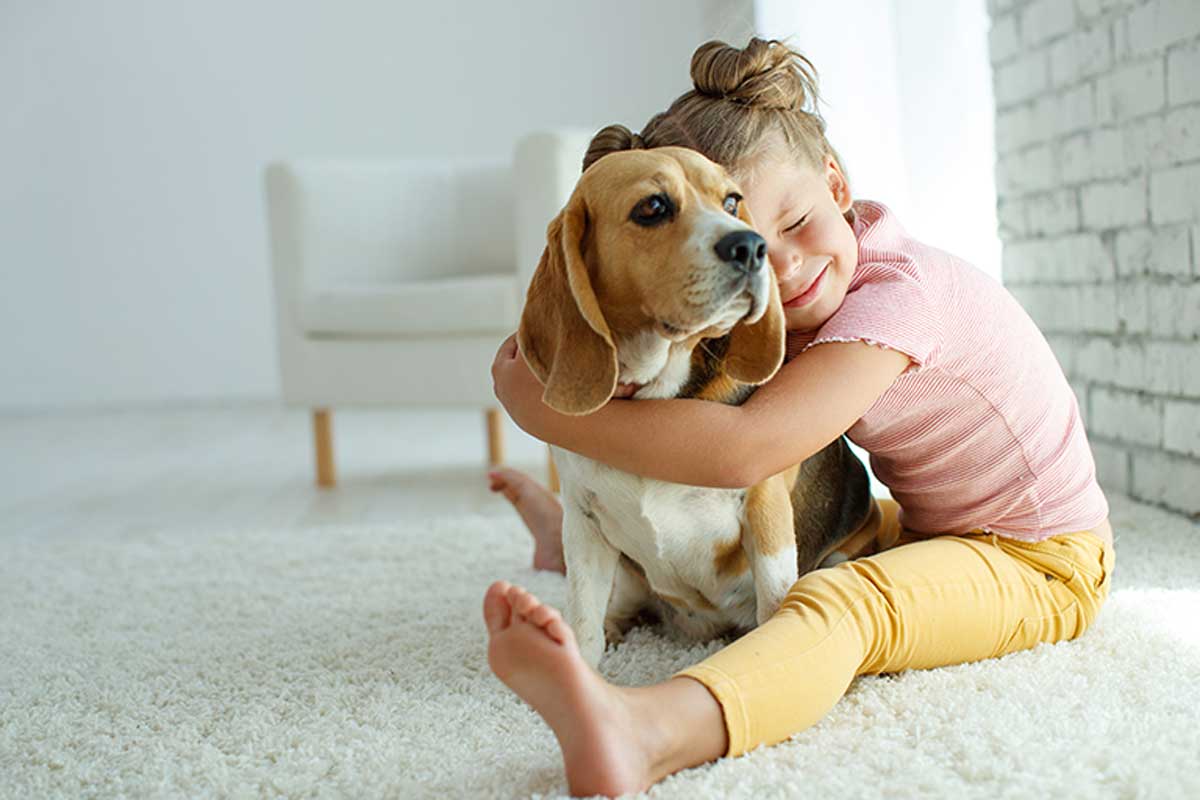Veterinary Tips for The Responsible Adoption of Dogs and Cats


Written and verified by the psychologist Sara González Juárez
It’s easy to connect with an animal’s look, especially those that have been with us for so many centuries, learning to communicate with us. This often awakens the impulse to take them home with us, and that’s why we’ve written this article, to talk about the responsible adoption of dogs and cats.
Current propaganda is focusing, mainly, on ending the sale and purchase of animals, and rightly so. Although more and more people opt for adoption instead of approaching the industry that “produces” them, it is also necessary to apply responsible criteria when they’re taken from a shelter. So, here are some tips to make this decision in a thoughtful way.
Adoption and abandonment
Surely you have come across campaigns that try to dissuade the public from buying animals, and more so on special dates such as Christmas. This is because the act of buying an animal causes the animal to be conceived as an object, detracting from its welfare. In turn, this conception (always unconscious) increases the chances that the animal will end up on the street.
If we take a country such as Spain by means of an example, the number of abandoned cats and dogs in that country amounts to almost 285,000. This number has skyrocketed since the pandemic, when many people acquired or adopted animals to cope with the COVID-19 lockdown. However, when they returned to their daily lives, they no longer wanted to take responsibility for their decisions.
Even with the 15% increase in adoption, this spike in abandonment has been a terrible blow to the animals and the shelters that take them in.
Veterinary tips for the responsible adoption of dogs and cats
Given these numbers, there’s an urgent need to stress the message of responsible adoption. Taking an animal out of a shelter is always helping two, the one who goes out and the one who comes in, but it’s of no use if the first one goes back to their cage or kennel again. Let’s have a look at some criteria that will help us to do it right.

1. Reflect on your reasons for adopting
Wanting an animal in your life because you like them and enjoy their company is totally legal. However, when it comes to adopting, it’s necessary to go a step further in this psychological aspect and ask the question: what about the animal? One of the strongest reasons to take them out of there must be the desire to give them a dignified and happy life, leaving in second place (although no less important) the benefits it will bring to the life of its owner.
2. If it has a breed, find out about the health problems associated with it
It’s usually rare to find pure breeds in shelters (with the exception of greyhounds and other breeds exploited for work), but if one ends up being your choice, remember that each one usually has health problems inherent to its genetics. Also, if they have ended up in a shelter, they won’t have led a good life, so you should be aware that veterinary complications are more likely to arise.
3. Precautions when picking them up off the street
Giving a home to a dog or cat living on the street is an act of immeasurable kindness and affection. However, this isn’t without risk, so keep this in mind:
- It may be an escaped animal and its owners are looking for them. Take them to a veterinarian to have their chip read and contact their owners. If no one responds, you can take responsibility for them.
- A visit to the vet is also important for a health check and treatment if needed.
- Don’t forget to quarantine them at home if you have other animals. You shouldn’t compromise their health with the entry of a new family member.
4. Plan money and time
For a responsible adoption of dogs and cats (and any species, really), prior planning work is necessary. That means you should calculate an approximate budget to work out how much looking after the animal is going to cost per month, and also the time you have available to look after them without it becoming a problem. If these resources aren’t available, it’s best to wait for another time to take responsibility for a living being.
5. Be aware of unforeseen events
Remember that, as with any decision you make in life, adopting an animal isn’t without risk. Chronic illnesses, behavioral problems, or your own life events are examples of how a responsible adoption of dogs and cats can be complicated. You must psych yourself up so that the pitfalls you encounter in your life don’t affect the animal living with you.
6. Sterilize your animal

On many occasions, it’s the shelters themselves that sterilize the animals before giving them up for adoption. If this isn’t the case, remember that spaying and neutering doesn’t only prevent future health problems, but also helps towards the fight against indiscriminate animal breeding.
Many shelters thus ensure that their animals aren’t adopted to be bred later or sold.
As you can see, adopting is an act of love and freedom, but also an action that requires eliminating impulsivity from your life. However, if you do it right, you can enjoy one of life’s most wonderful gifts.
It’s easy to connect with an animal’s look, especially those that have been with us for so many centuries, learning to communicate with us. This often awakens the impulse to take them home with us, and that’s why we’ve written this article, to talk about the responsible adoption of dogs and cats.
Current propaganda is focusing, mainly, on ending the sale and purchase of animals, and rightly so. Although more and more people opt for adoption instead of approaching the industry that “produces” them, it is also necessary to apply responsible criteria when they’re taken from a shelter. So, here are some tips to make this decision in a thoughtful way.
Adoption and abandonment
Surely you have come across campaigns that try to dissuade the public from buying animals, and more so on special dates such as Christmas. This is because the act of buying an animal causes the animal to be conceived as an object, detracting from its welfare. In turn, this conception (always unconscious) increases the chances that the animal will end up on the street.
If we take a country such as Spain by means of an example, the number of abandoned cats and dogs in that country amounts to almost 285,000. This number has skyrocketed since the pandemic, when many people acquired or adopted animals to cope with the COVID-19 lockdown. However, when they returned to their daily lives, they no longer wanted to take responsibility for their decisions.
Even with the 15% increase in adoption, this spike in abandonment has been a terrible blow to the animals and the shelters that take them in.
Veterinary tips for the responsible adoption of dogs and cats
Given these numbers, there’s an urgent need to stress the message of responsible adoption. Taking an animal out of a shelter is always helping two, the one who goes out and the one who comes in, but it’s of no use if the first one goes back to their cage or kennel again. Let’s have a look at some criteria that will help us to do it right.

1. Reflect on your reasons for adopting
Wanting an animal in your life because you like them and enjoy their company is totally legal. However, when it comes to adopting, it’s necessary to go a step further in this psychological aspect and ask the question: what about the animal? One of the strongest reasons to take them out of there must be the desire to give them a dignified and happy life, leaving in second place (although no less important) the benefits it will bring to the life of its owner.
2. If it has a breed, find out about the health problems associated with it
It’s usually rare to find pure breeds in shelters (with the exception of greyhounds and other breeds exploited for work), but if one ends up being your choice, remember that each one usually has health problems inherent to its genetics. Also, if they have ended up in a shelter, they won’t have led a good life, so you should be aware that veterinary complications are more likely to arise.
3. Precautions when picking them up off the street
Giving a home to a dog or cat living on the street is an act of immeasurable kindness and affection. However, this isn’t without risk, so keep this in mind:
- It may be an escaped animal and its owners are looking for them. Take them to a veterinarian to have their chip read and contact their owners. If no one responds, you can take responsibility for them.
- A visit to the vet is also important for a health check and treatment if needed.
- Don’t forget to quarantine them at home if you have other animals. You shouldn’t compromise their health with the entry of a new family member.
4. Plan money and time
For a responsible adoption of dogs and cats (and any species, really), prior planning work is necessary. That means you should calculate an approximate budget to work out how much looking after the animal is going to cost per month, and also the time you have available to look after them without it becoming a problem. If these resources aren’t available, it’s best to wait for another time to take responsibility for a living being.
5. Be aware of unforeseen events
Remember that, as with any decision you make in life, adopting an animal isn’t without risk. Chronic illnesses, behavioral problems, or your own life events are examples of how a responsible adoption of dogs and cats can be complicated. You must psych yourself up so that the pitfalls you encounter in your life don’t affect the animal living with you.
6. Sterilize your animal

On many occasions, it’s the shelters themselves that sterilize the animals before giving them up for adoption. If this isn’t the case, remember that spaying and neutering doesn’t only prevent future health problems, but also helps towards the fight against indiscriminate animal breeding.
Many shelters thus ensure that their animals aren’t adopted to be bred later or sold.
As you can see, adopting is an act of love and freedom, but also an action that requires eliminating impulsivity from your life. However, if you do it right, you can enjoy one of life’s most wonderful gifts.
All cited sources were thoroughly reviewed by our team to ensure their quality, reliability, currency, and validity. The bibliography of this article was considered reliable and of academic or scientific accuracy.
- Infografía Él nunca lo haría. Estudio de abandono y adopción 2022 | Fundación Affinity. (s. f.). https://www.fundacion-affinity.org/observatorio/infografia-el-nunca-lo-haria-abandono-adopcion-perros-gatos-espana-2022
- FAADA | Animales de compañía: Puppy mills. (s. f.). Fundación FAADA. http://faada.org/comercio-animales-de-compania-puppy-mills
This text is provided for informational purposes only and does not replace consultation with a professional. If in doubt, consult your specialist.








